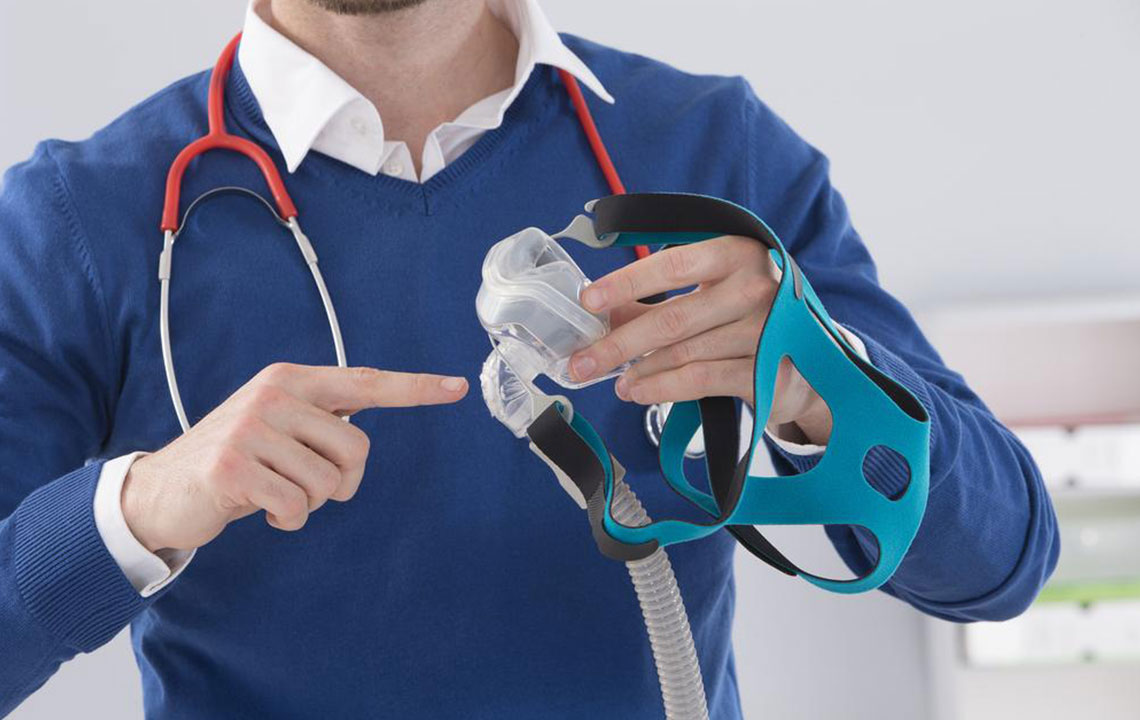5 Popular and Effective Methods to Cure Sleep Apnea

Most people do not consider snoring as a serious problem. The fact of the matter is that loud snoring and the subsequent daytime fatigue can be a symptom of sleep apnea. This is a breathing disorder where breathing stops and restarts in a repeated manner while sleeping. If you suffer from sleep apnea, you feel fatigued and exhausted during the daytime. This situation can make a negative impact on your mood and relationship. Moreover, it is harmful to your health. Sleep apnea can be divided into different categories and they include complex, obstructive, and central sleep apnea. The most common type of sleep apnea is considered to be obstructive sleep apnea. The soft tissue available in your back throat remains in a relaxed state during sleep and this situation results in the blockage of the airway.
How to cure sleep apnea? There are several treatment options available to get rid of this problem and ensure sound sleep. First of all, you must try to overcome the embarrassment associated with your snoring. Secondly, you have to make efforts to identify the symptoms of sleep apnea. Most effective home treatments to cure sleep apnea are changing your sleep habits and introducing lifestyle changes.
What are the lifestyle changes to be made?
If you want to cure sleep apnea, you must strive hard to lose weight. Most health experts and doctors agree with this argument. If you are a person struggling with obesity or overweight and have sleep apnea, you have to think about nutritional counseling. Alcohol intake must be limited strictly. If you are using sedatives or sleeping pills, you must stop this habit immediately because it can easily aggravate the symptoms. Another effective option is to get a lot of sleep. The frequency of the apnea episodes increases when you are not getting adequate sleep. The nicotine present in tobacco collapses the muscles to keep the airways open. If you do not smoke, the possibility of muscle collapsing at night reduces in order to keep the airway unobstructed.
Introducing changes in the sleeping habits
You must develop the habit of sleeping on your side. Sleeping on the back needs to be discouraged. It has been found out that sleeping on your side addresses mild sleep apnea effectively. The head of the bed can be raised to find some relief and making use of a special pillow known as cervical pillow also helps you keep your head in a position that discourages snoring and sleep apnea-related issues.
Effective utilization of a CPAP machine
Several people are using CPAP also known as continuous positive airway pressure machine to improve their breathing issues. You must use the CPAP machine every night to enjoy optimal results. If you are not using for the entire night, the symptoms may come back right away.
Using breathing devices
Many doctors recommend using a breathing device while sleeping. It allows you to maintain the airways open and you can place this device in your mouth. There are also devices such as disks or strips that can be placed on your nose. Other options that can be used to open your nasal passage include saline spray and nasal irrigation system.
Tighten muscles which keep mouth closed
Simple methods like holding a pen between your teeth or chewing a gum for 10 minutes immediately before bedtime tighten the muscles that keep your mouth closed.
Performing throat and tongue exercises
These types of exercises strengthen the muscles in the airway and it reduces the chances of muscle collapse. You have to practice these exercises for several weeks to reduce the severity of sleep apnea. Gargling with water for 5 minutes is a good exercise, and it should be done two times a day. Swallowing five times after holding the tongue between your teeth is another example and this exercise has to be repeated five times a day. You can also brush the top and sides of your tongue after holding it flat against the mouth floor and these brushing movements should be repeated 5 times at a time and 3 times a day.
How to cure sleep apnea if you do not get relief from all the methods advocated above? In such a situation, you have to think about sleep apnea implants or surgery. Implants refer to inserting a pacemaker system to maintain the pathways open during sleep. When it comes to surgery, various procedures are performed based on the condition of the patient like removing adenoids, removing tonsils, removing excess tissues, implanting plastic rods, and reconstructing the jaw.
Read proper information about how to cure sleep apnea on the Internet, and you might come to know of various ways to cure the same. Once you get to know of different ways, things are going to be really easy for you.


